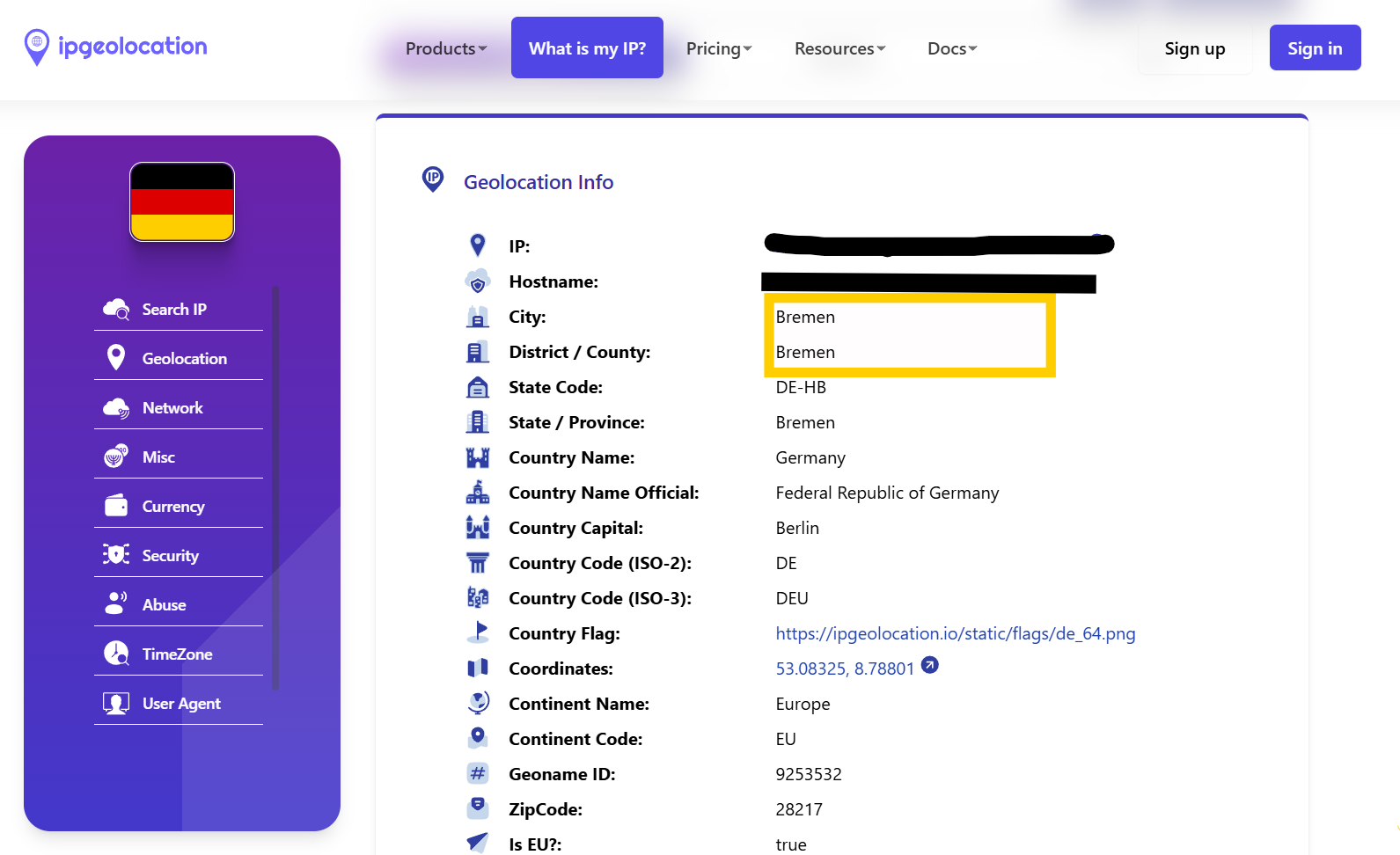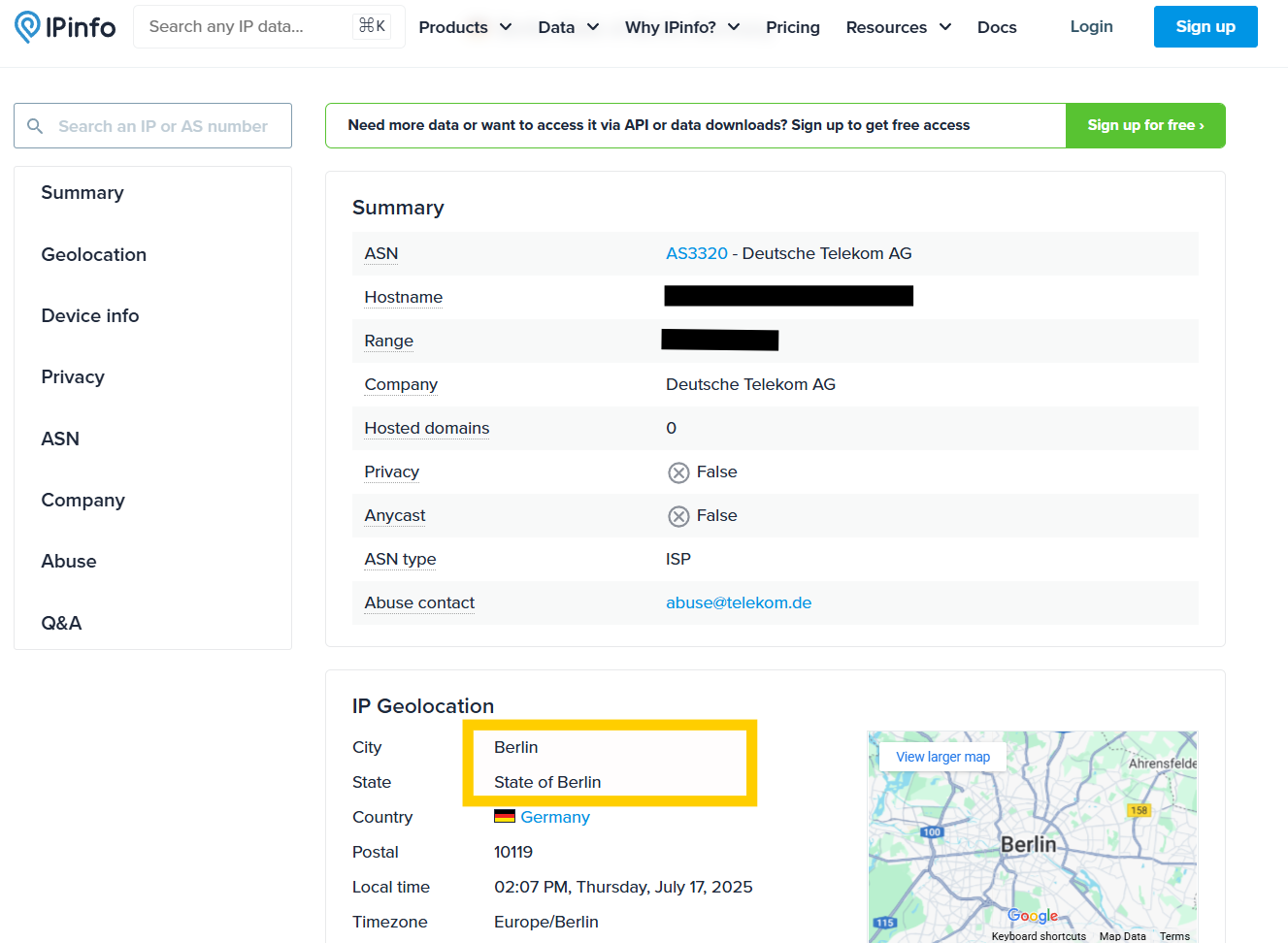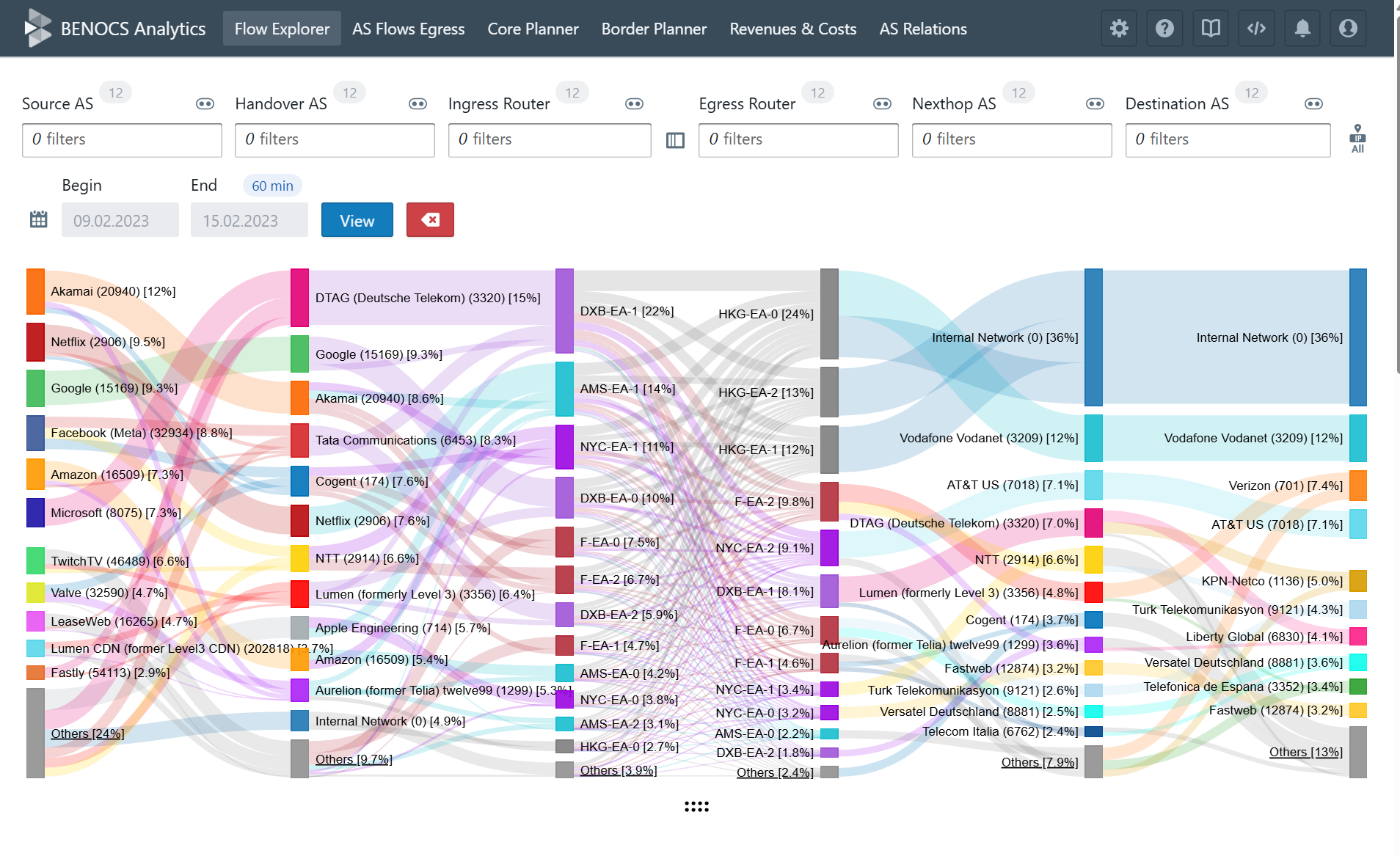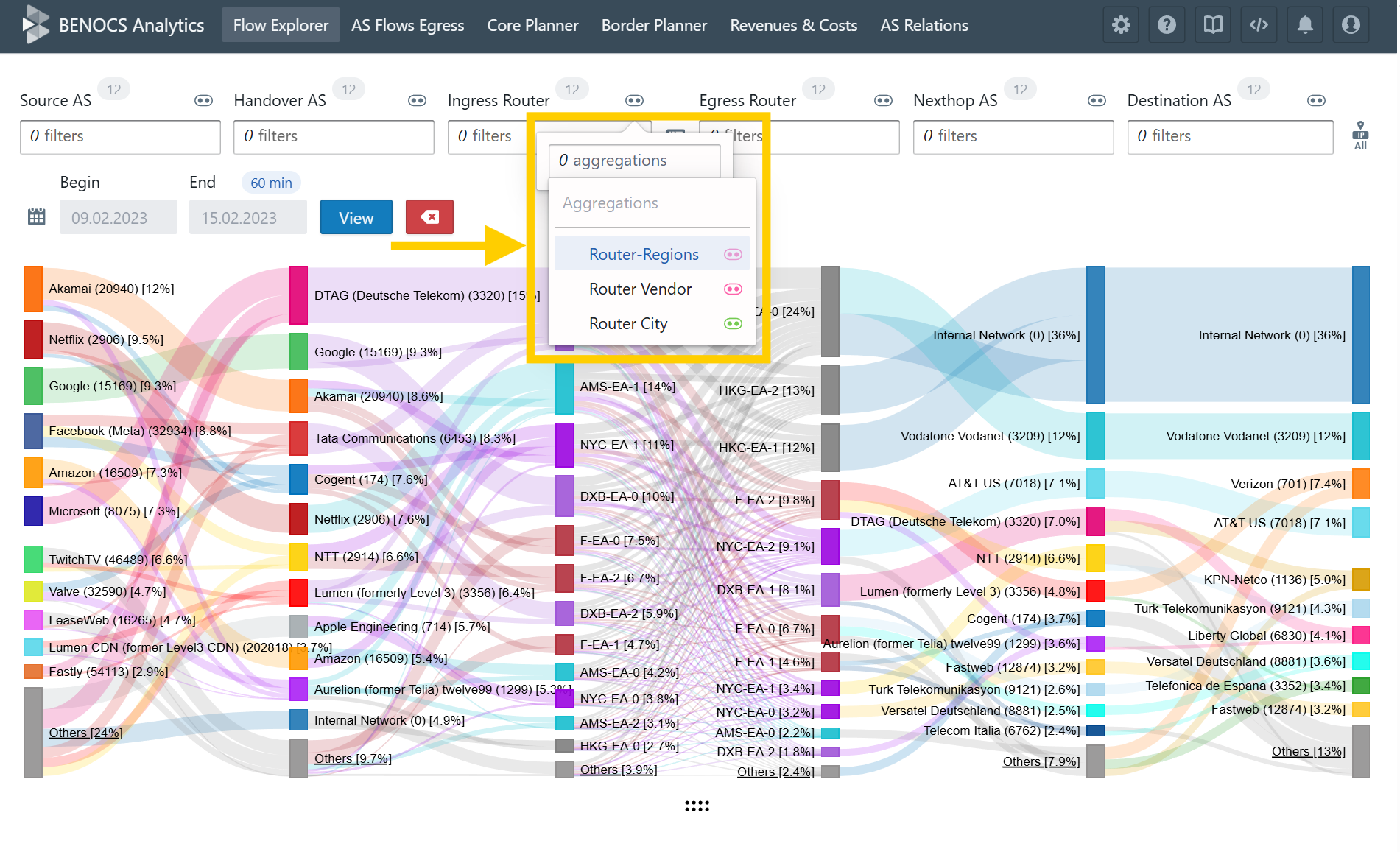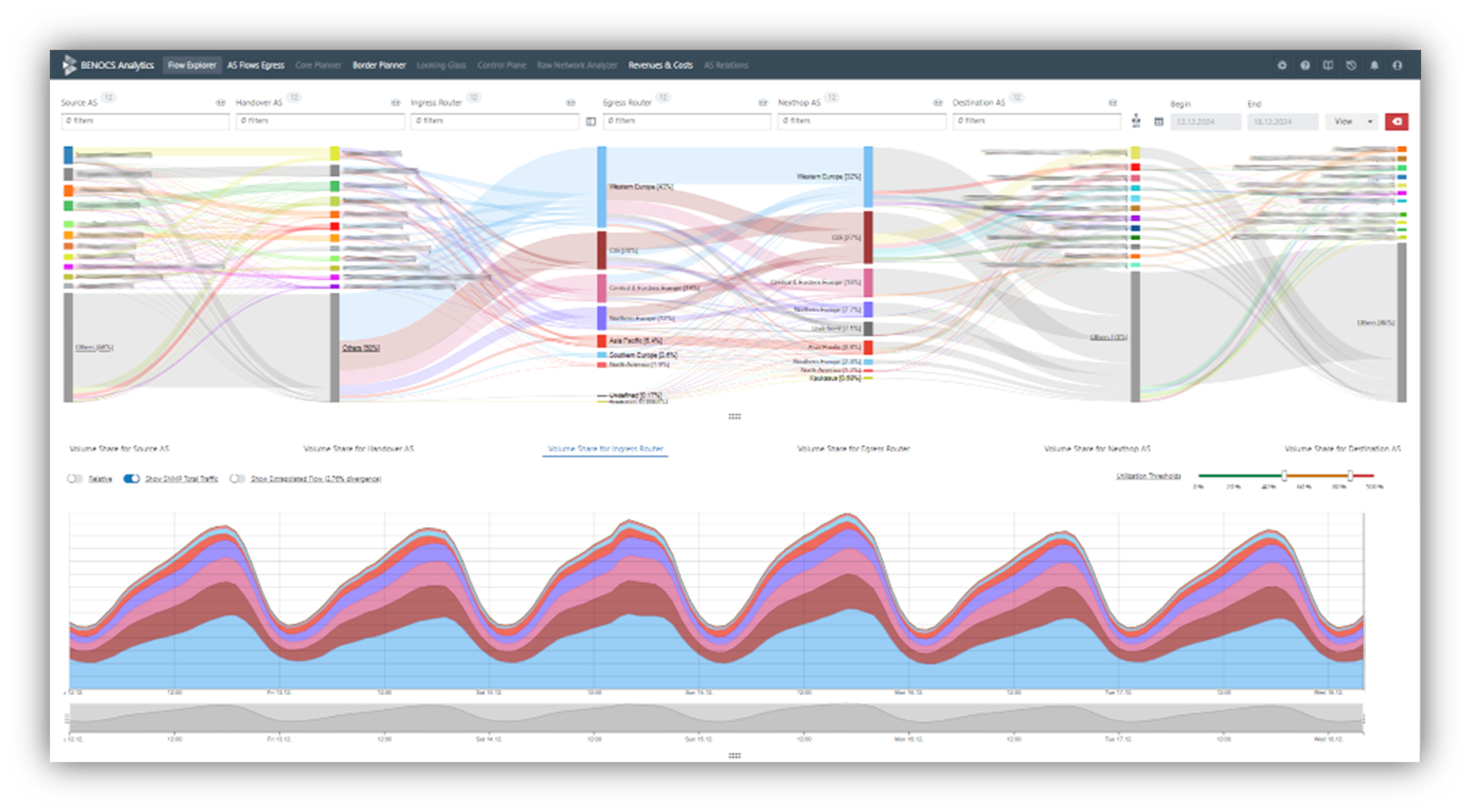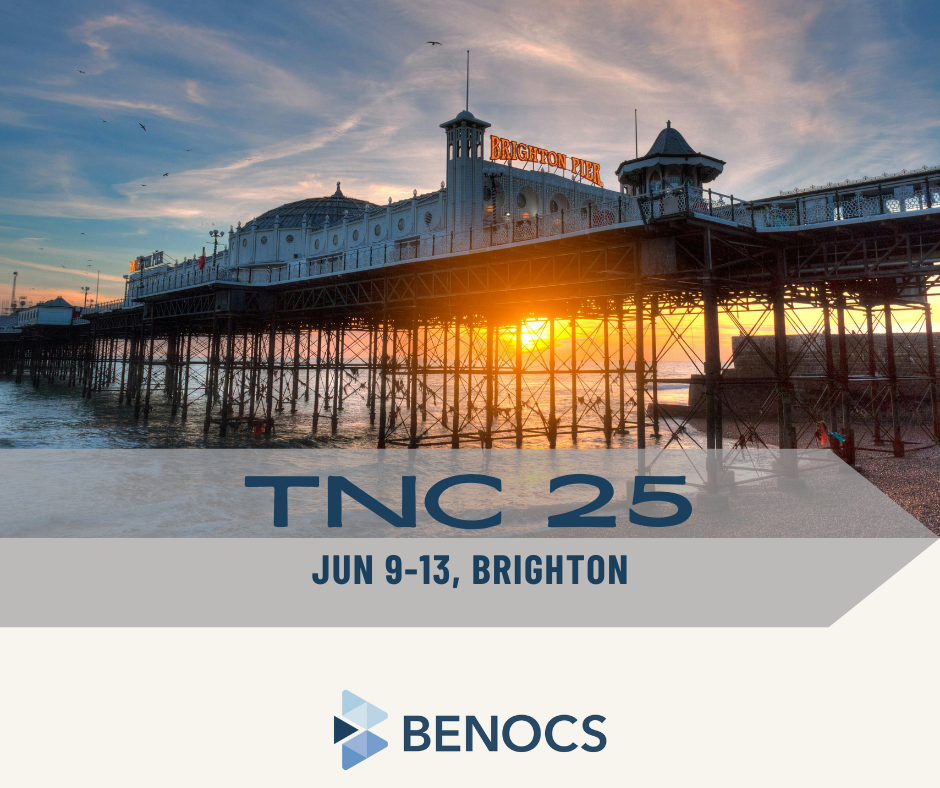Berlin, Germany, May 21, 2025 – The telecommunications provider 1&1 Versatel, which specializes in enterprise customers, has recently deployed the German technology BENOCS Analytics to monitor traffic flows in its fiber optic network. BENOCS is a specialized provider of network analysis software. The Berlin-based team supports 1&1 Versatel in visualizing and optimizing its networks.
By using BENOCS Analytics, 1&1 Versatel receives a detailed and transparent overview of traffic flows across the entire network. The tool processes flow and routing information to provide a comprehensive picture of network traffic. This allows individual components of network flows to be precisely identified and classified, enabling more precise capacity planning and continuous optimization of network operations.
“It is always our goal to provide our corporate customers with first-class service quality,” explains Frank Rosenberger, CEO of 1&1 Versatel. “The precise data from the BENOCS Analytics Tool helps our engineering team and our colleagues in capacity management to immediately identify any changes, quickly eliminate bottlenecks, and ensure optimal network quality for our customers at all times.
Thanks to its advanced analytics capabilities, 1&1 Versatel can not only identify potential traffic anomalies but also identify optimization opportunities to improve performance. This includes, among other things, the targeted management of traffic peaks to avoid bottlenecks and use resources more efficiently. Precise monitoring and early error detection also lead to shorter response times in the event of disruptions.
“We are delighted to partner with 1&1 Versatel and are proud to provide our network transparency and optimization technology in one of Germany’s most modern networks. 1&1 Versatel is a strong partner for us, helping us further develop BENOCS Analytics to meet the growing demands of high-performance fiber optic networks,” emphasizes Stephan Schröder, CEO of BENOCS.
The use of AI will further improve the automated control and optimization of the fiber optic network in the future and ensure high security and performance in the long term.



